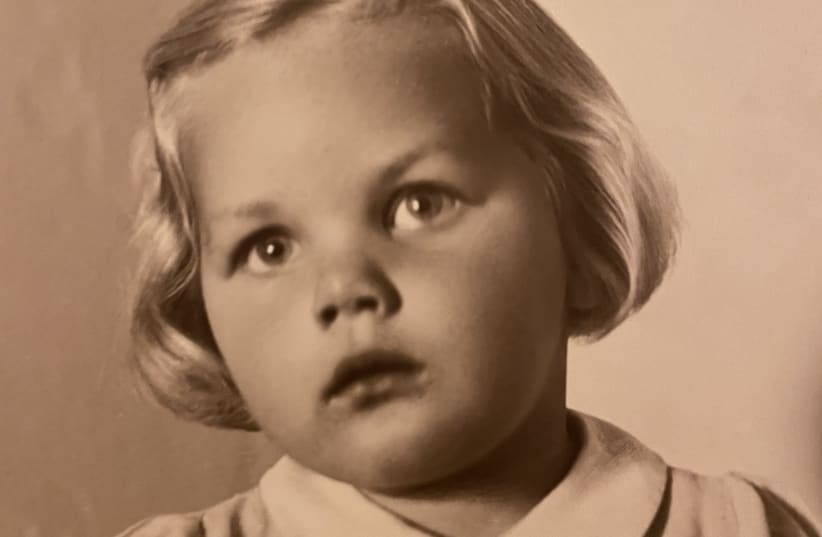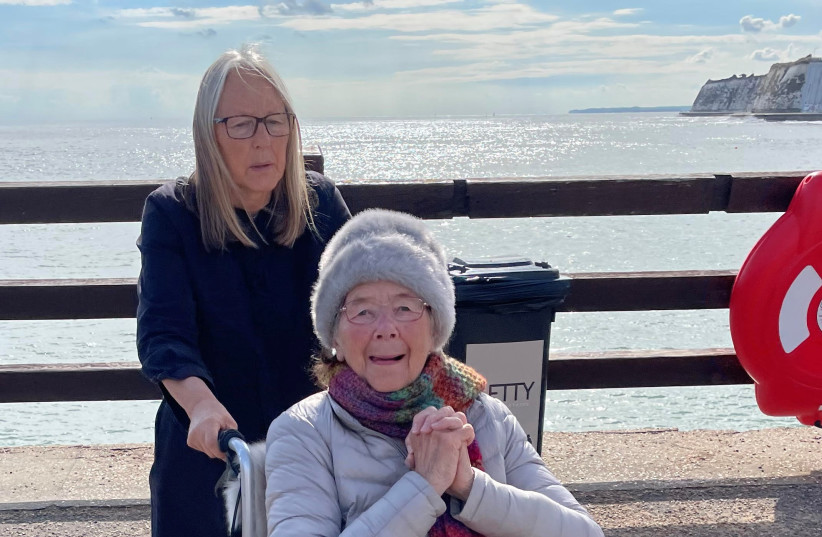The winter of 1941-1942 was one of discontent for the leadership of the Irgun, the forerunner of the Stern Group.
Having broken away from the Revisionist Irgun in the summer of 1940, the underground organization found itself at that time almost bereft of members. Many members had been arrested, had turned themselves in or had even abandoned the struggle. The command echelon had been decimated, its financial resources were low, and its public support was dwindling.
Although its secret radio station had begun broadcasting on December 12, and several key figures had broken out of detainment camps together with the arrival of committed members from Betar who had escaped from Vilna and made their way to Mandate Palestine, 1941 was turning into a year of failure.
Two members of the underground’s central command, Hanoch Kal’ai and Binyamin Zaroni, expressed ideological disagreement and left at the end of the summer of 1941. In August, an expropriation job on Jerusalem’s Anglo-Arab Bank failed, further depleting the funds available for maintaining the underground and its members.
Although a meeting between Avraham “Yair” Stern and the Hagana’s Yitzhak Sadeh was arranged on October 15, no understanding was reached, and the opposition of the official Yishuv’s institutions against the breakaway group increased due to its extreme anti-British positions even during the world war.
The British managed to locate apartments in Tel Aviv where underground members were hiding, and on December 21 seven were arrested at Levinsky Street and Borochov Street, including Yitzhak Shamir and Yehoshua Zetler.
Striking back, the underground shot dead a suspected collaborator, Yaakov Tzapioff, a policeman in Rehovot. Stern sent a deputy, Natan Yellin-Mor, to Syria to find a way to the Balkans and renew contacts with potential supporters.
Seeking more finances, the Irgun, on the morning of January 8, 1942, attempted to hold up Tzvi Kupstein, who was carrying cash from the Mashbir Merkazi in Tel Aviv. In the exchange of fire, when the assailants were chased by the police, two Jewish bystanders were killed, although Yehoshua Becker testified that it was a British policeman who was responsible.
The four robbers were arrested. They were interrogated by Geoffrey Morton, chief superintendent; Thomas James Wilkin, an assistant superintendent and head of the Jewish Division in the Criminal Investigation Department; and Nahum Goldman of the Palestine Police. Goldman fabricated the identity parade, and Becker was sentenced to death. Later, in April, his sentence was commuted to life imprisonment. From then on, the underground was referred to pejoratively as the “Stern Gang.”
Stern decided that the immediate target was to be members of the Palestine Police and especially officers of the CID.
A rooftop room on a small street just east and a bit north of Dizengoff Square, named after Yael, who had assassinated Sisera as related in Judges 4:21, was selected for the operation. It was building No. 8. Recently purchased by textile merchant Pinchas Gitzler, it had been built originally in 1934 for Mina, the daughter of Awab Qirat. A one-room addition was constructed on the roof.
Moshe Svorai brought the booby-trap concept from Mezra Camp – an administrative detention camp located between Afula and Nazareth – where it had been discussed. Yaakov Eliav prepared the devices from training lessons he received from the Polish Army in the special Irgun three-month course at the Andrychów training ground near Wadowice in early 1939.
Eliav prepared a 25-kg. bomb surrounded with additional kilograms of metal in a dresser by the door. A cord attached to a fake antenna was drawn to a higher roof four houses down but on another street that made escape easier. A second explosive device of 15 kg. was planted in the path leading up to the house, prepared over three days of work at night, with five fighters – two couples and another lookout – on a roof, keeping watch. Eliav finished at 4:30 in the morning. The two fighters chosen to explode the bombs were Baruch and Yehoshua Cohen, with Shimon “Siomka” Markovitz-Ziv to set off the small blast to lure the police to the location.
Just after 9 a.m., Siomka exploded a small charge on the roof to create the impression that there had been an accidental explosion at a bomb-making factory. This was to lure the police; and, as he descended the stairs, he sprayed the walls with some chicken blood he had earlier prepared.
Shaken neighbors called the police, but as Morton and Wilkin were in a meeting, Supt-Maj. Shlomo Schiff, commander of the Tel Aviv police, was sent in their place. He took with him five additional policemen: Nahum Goldman, Evelyn Thomas Turton, Zeev Dichter, Hanoch Liazgovarsky and R. Shlein.
From the distance, Baruch saw the group appear on the roof. Schiff approximated the build of Morton, and Turton looked like Wilkin to him. He pressed the electric switch. Schiff was immediately killed. Goldman died of his wounds overnight, and Turton, who had both his legs amputated, died a day later at Assuta Hospital. In 1938, Turton had been awarded the King’s Police Medal for defending a train under attack by an Arab gang near Ras al-Ayn; he killed two terrorists. He was reputed to have been the hangman at the execution of Shlomo Ben-Yosef.
Despite being ordered to explode the bomb buried under the approach path, even though Morton and Wilkin did eventually arrive at the scene, Cohen, seeing many bystanders gathered at the house, decided not to detonate the third charge. Three weeks later, on February 12, Morton, after he and Wilkin had arrested Stern at then-Mizrachi Bet Street in south Tel Aviv, shot Stern, who was manacled at the time, killing him. Earlier, on January 27, Morton had burst into the third-story flat of the Messer family which was being used for small-arms training by the underground. Avraham Amper and Zelig Jacques were shot dead with their hands up. Moshe Svorai and Yaakov Eliav (Levstein) were wounded and arrested.
HOWEVER, BY the beginning of 1944, both the Irgun and the Stern Group undergrounds, seeking national liberation, had reengaged the British, and in the fall of 1945, the Hagana and Palmah, faced with the British still pursuing their White Paper policy despite the Holocaust, joined them under a coordinating framework called the Hebrew Resistance Movement.
On December 28, 1945, a joint operation was conducted by the Irgun and Stern Group on the Jerusalem and Tel Aviv police headquarters and on a north Tel Aviv army arms and munition site. The explosions resulted in considerable damage. Among the persons trapped in the demolished Jaffa CID headquarters, also shelled by mortar fire, was George F. Smith, a police assistant superintendent.
Smith had married Turton’s widow and had just completed becoming legal guardian of nine-year-old Ann, her mother having died of an illness in March. Ann was left, for a third time, an orphan.
THE TRAGIC circumstances left me wondering what had happened to Ann Turton-Smith.
Through a blog I posted in The Jerusalem Post, which her son, Richard Filipczak, read, I learned she had a son and a daughter. Not only did Ann become a grandmother but a great-grandmother as well. The family members all live in the south of England. In 2021, Richard sent me his mother’s time line.
Ann was born in November 1935 in Haifa. Her father was 38 when killed in the January 21 blast. He was awarded the King’s Police Medal in 1937 for his gallantry on October 14, 1937, when the Haifa-Lod train was derailed by a party of Arabs, as reported in The Gazette newspaper, which lists royal and other ceremonial duties and awards. Both of Ann’s parents and her stepfather are buried in Bishop Samuel Gobat Cemetery, Mount Zion, where there is a section for the PPF and their families.
She was taken care of by other members of PPF families for several years and returned to England, accompanied by PPF staff and their families via ship following the end of the Mandate.
She was then taken care of by her Aunt Ivy (Ann’s mother’s sister) and her aunt’s husband, Stuart, who lived in Nottingham.
Across the road from her new home lived a Polish couple who had gone to England during or just after World War II. They had taken in a Polish lodger named Henryk Filipczak. He had served in the Polish Air Force and had transferred to England. Henryk and Ann married in 1956.
Her son, Richard, was born in 1957, and in 1963 the sister, Jenny, was born. Henryk eventually gained employment as an engineer repairing knitting machines. Ann was a housewife and mother until early 1970, when she took work as a clerk and saleswoman in a large department store.
Jenny qualified as a nurse and married her husband, who qualified as a general practitioner. They moved to the south of England and have lived there ever since. In July 1971, Henryk died of motor neuron disease.
In the early 1980s, Ann remarried, and a few years later moved to be near Jenny and Jenny’s ever expanding family; she has three girls and three boys. The youngest is now 19 and just started university. The others have jobs as diverse as tree surgeons, physiotherapists, and mother/housewife.
Ann later divorced her second husband and moved to a warden-aided flat. In addition to grandchildren, she has three great-grandchildren.
Ann suffered from Alzheimer’s and had very poor mobility these past few years.
I received an email from her son-in-law, Tony Martin, informing me that she died on November 15 and would be buried with Henryk in Nottingham.
The writer lectures on the history of the Jewish undergrounds in pre-state Israel and is a research fellow at the Menachem Begin Heritage Center.

